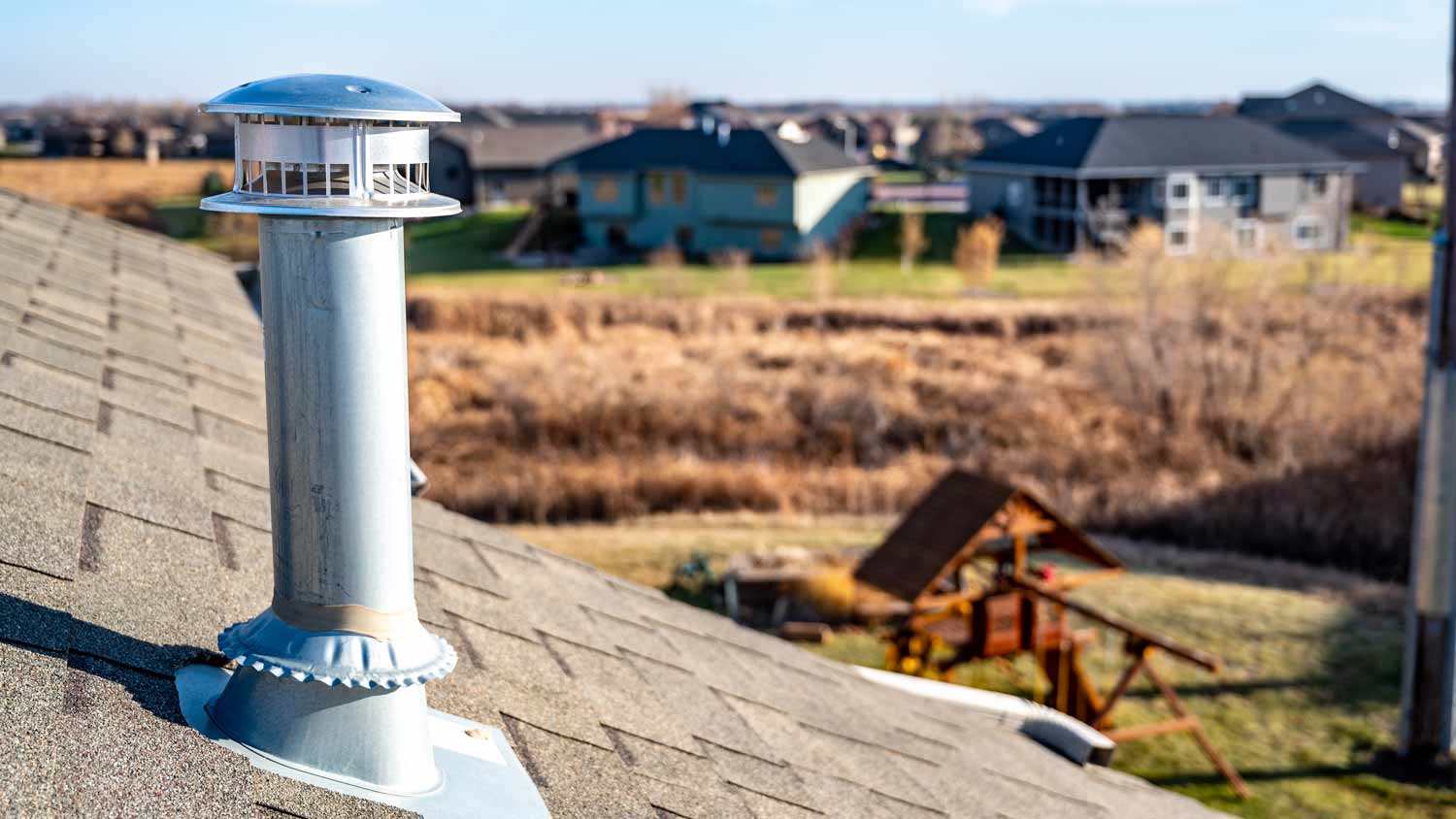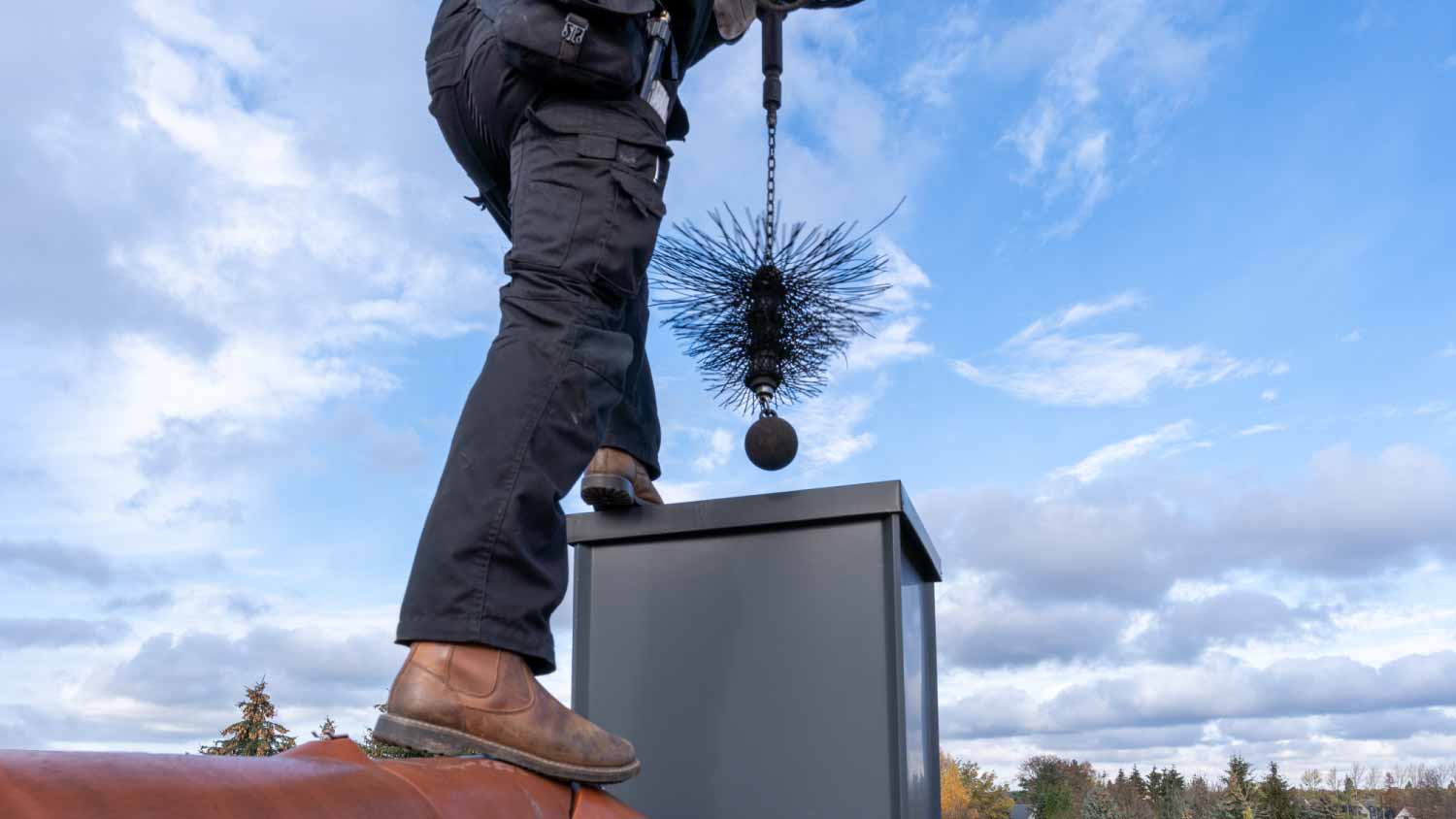
Use this guide to budget for chimney inspection costs based on factors like inspection level and the additional chimney services you choose.
Chimney cleaning costs an average of $254


On average, chimney sweeping costs between $129 and $380, with a national average of $254.
The frequency of sweeping, chimney type, and usage all significantly affect the total cost.
Professional cleaning ensures thorough inspection, identifying issues before they escalate.
Proper maintenance extends chimney life and safeguards your home's safety and comfort.
This article was updated using automation technology and thoroughly reviewed for accuracy by HomeAdvisor Editor Ryan Noonan.
Keeping your fireplace safe and efficient starts with a clean chimney. Most homeowners spend an average of $254 on chimney sweep costs, though your total can be as low as $89 or as high as $1,020. A significant part of your total is based on how often you schedule a sweep. Build this number into your yearly budget and bring in a professional chimney sweep to stay ahead of maintenance and protect your home.
Numerous factors and add-on services may affect the cost to sweep your chimney. Below are the main variables that affect your bill.
The type of fireplace you own has a significant impact on the final bill. Gas and pellet units are low-maintenance, so you’ll spend less. Wood-burning stoves and open fireplaces churn out more ash and creosote, so plan on more frequent—and more hands-on—cleanings.
| Chimney Type | Average Cost Range |
|---|---|
| Gas fireplace | $80–$130 |
| Pellet stove | $130–$200 |
| Wood stove | $150–$300 |
Have a steep roof or a multi-story home? Your chimney sweep may require additional equipment, such as scaffolding or safety rigs, which can increase the cost.
Multiple flues or an extra-tall stack mean more brush time—and more money. A single, standard flue is quicker to service, but if your chimney has several passageways or a wide diameter, plan on a higher labor charge.
The more fires you burn, the quicker creosote stacks up. Skip a season or two of professional cleaning, and the sweep will spend extra time scraping it out, costing you more. Regular, yearly service keeps the price (and the mess) in check.
Labor rates swing with your location and the complexity of the job. Book in fall and you’ll compete with everyone else prepping for winter—prices tend to rise. Need an after-hours or weekend sweep? Expect an emergency surcharge.
From raccoons to birds, critters love the shelter a chimney provides—but they’re rough on masonry and flues. Removing wildlife costs $180 to $560. Protected species such as bats may require special permits, while a simple squirrel eviction is quicker and cheaper.
Many chimney cleaning services include a basic inspection as part of the service, but various inspection levels and associated costs range from $85 to $5,000. More comprehensive chimney inspections may be necessary for old or damaged chimneys.
| Inspection Level | Inspection and Cleaning Cost |
|---|---|
| Level 1 | $160–$300 |
| Level 2 | $260–$460 |
| Level 3 | $500–$800 |
Level 1: A quick check-up that looks for blockages, creosote, or visible damage and confirms everything vents the way it should.
Level 2: Recommended after a system change or an incident like a chimney fire. Your pro uses cameras to hunt for hidden water damage or structural issues inside the flue.
Level 3: A deep dive reserved for severe problems—think post-earthquake or major fire—and may involve opening walls or masonry for a closer look.
At an average of $15 each, creosote-sweeping logs help break down stubborn residue so it flakes off and lands in the firebox. They’re a handy in-between step, but they don’t replace an annual visit from a certified sweep.
Chimney cleaning involves more than a sweep to remove soot. This process involves inspecting and maintaining various components of the chimney and fireplace system. Depending on their condition, some components may require additional chimney repairs or replacement.
| Repair Type | Average Cost Range |
|---|---|
| Chimney liner installation | $625–$7,000 |
| Fireplace damper repair | $150–$450 |
| Chimney flashing repair | $150–$1,600 |
| Chimney cap replacement | $75–$1,000 |
Liners are a protective layer inside the flue that helps prevent wear, retain heat, and optimize ventilation of dangerous gases. If workers discover a damaged or deteriorated liner during cleaning, you may need to reline your chimney, which ranges between $625 and $7,000.
Fireplace dampers cost $150 to $450 to replace and $100 to $250 to repair. Dampers prevent downdrafts and direct smoke up and out of the chimney. Warped dampers can lead to cold air entering your home, poor air quality, and inefficient burning.
Chimney flashing repairs cost $150 to $1,600. Higher costs reflect larger chimneys, premium material, and the extent of damage. In some cases, minor damage may only need resealing.
Replacing a chimney cap averages $300, ranging between $75 and $1,000. Chimney caps reduce downdrafts and prevent animals, rainwater, and debris from entering your chimney.
Keep costs down without cutting corners. Use these money-saving tips:
Schedule regular cleaning and inspections to prevent creosote buildup, blockages, chimney fires, and expensive chimney replacement costs.
Burn creosote logs to minimize buildup between cleaning services.
Get detailed quotes from multiple local chimney sweep contractors and compare their rates and included services.
Keep your chimney in good condition to ensure proper ventilation, which helps manage creosote buildup.
No place is more important than your home, which is why HomeAdvisor connects homeowners with local pros to transform their houses into homes they love. To help homeowners prepare for their next project, HomeAdvisor provides readers with accurate cost data and follows strict editorial guidelines. We surveyed over 10,000 real customers about their project costs to develop the pricing data you see, so you can make the best decisions for you and your home. We pair this data with research from reputable sources, including the U.S. Bureau of Labor Statistics, academic journals, market studies, and interviews with industry experts—all to ensure our prices reflect real-world projects.
From average costs to expert advice, get all the answers you need to get your job done.

Use this guide to budget for chimney inspection costs based on factors like inspection level and the additional chimney services you choose.

Discover who installs chimney caps, the benefits of chimney cap installation, and why hiring a chimney sweep is the best way to get the job done right.

Who cleans chimneys? Learn when to hire a CSIA-certified chimney sweep and how pros clean safely to protect your home and fireplace.

Getting ready for winter? Don’t forget to buy wood for the fireplace. See how much a cord of wood costs and start budgeting now.